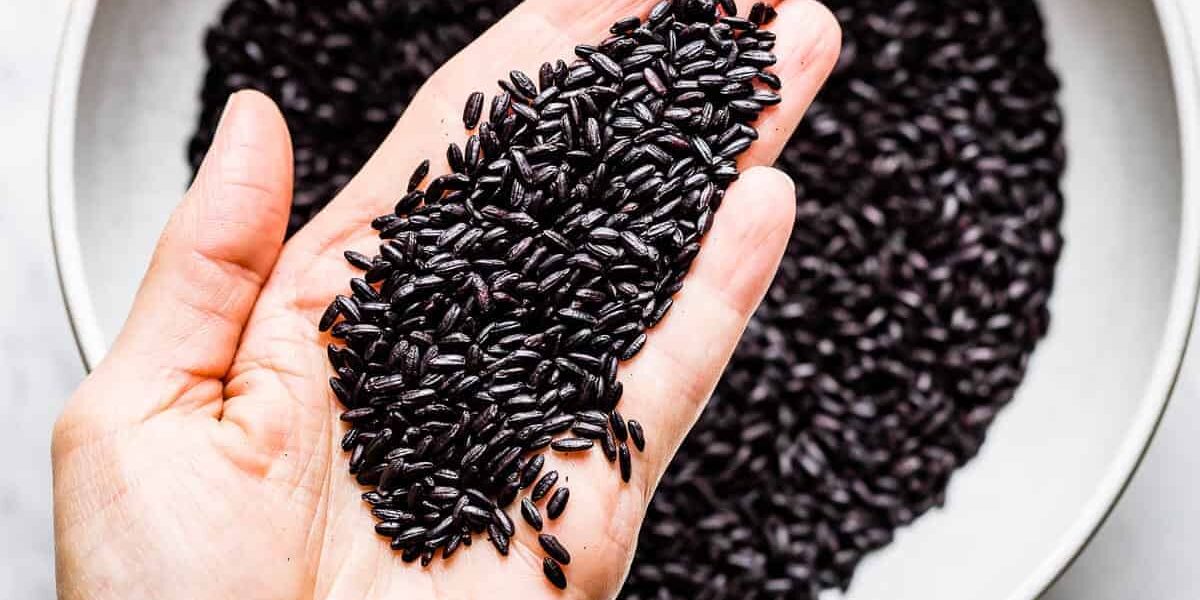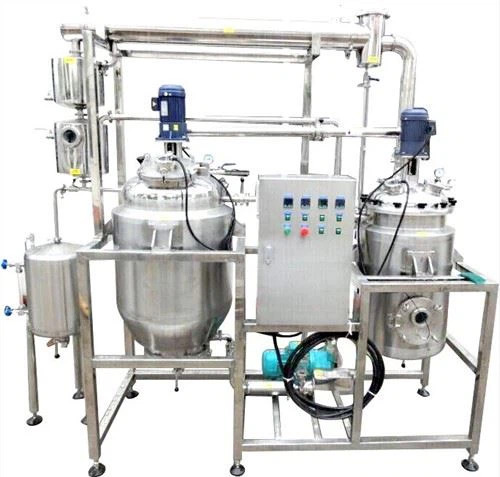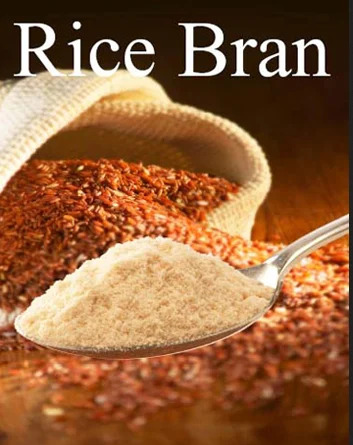Contents
- 1 Ultrasound-assisted extraction (UAE) is a novel and green technique that uses ultrasound waves to enhance the extraction of bioactive compounds from plant materials
- 2 Prof. Aécio D’Silva, Ph.D AquaUniversity
- 3 How UAE works?
- 4 The factors affecting the ultrasound-assisted extraction (UAE) of phenolic compounds and monomeric anthocyanin from rice bran
- 5 The optimization of the ultrasound-assisted extraction (UAE) of phenolic compounds and monomeric anthocyanin from rice bran
- 6
- 7 The applications and perspectives of the ultrasound-assisted extraction (UAE) of phenolic compounds and monomeric anthocyanin from rice bran
Ultrasound-assisted extraction (UAE) is a novel and green technique that uses ultrasound waves to enhance the extraction of bioactive compounds from plant materials
Prof. Aécio D’Silva, Ph.D
AquaUniversity
Ultrasound-assisted extraction (UAE) can increase the yield, quality, and efficiency of the extraction of phenolic compounds and monomeric anthocyanin from black and purple rice bran, which are rich sources of antioxidants and functional ingredients.
Phenolics stand out as crucial phytochemicals present in grains and berries, playing a significant role in determining cereal and fruit qualities like color and taste. Among the noteworthy phenolics, anthocyanins, which are glycosides of anthocyanidins, take prominence, especially in red and dark-colored grains and berries.
Cyanidin-3-glucoside is the primary anthocyanin present in black rice, with peonidin-3-glucoside representing a minor component [6]. Anthocyanins belong to the broader category of compounds collectively referred to as flavonoids, which constitute a subgroup within the larger group of compounds known as polyphenolics.
Rice bran is the outer layer of the rice grain that is removed during the milling process. Rice bran is usually considered a by-product or waste, but it has a high nutritional and functional value, as it contains various bioactive compounds, such as phenolic compounds and monomeric anthocyanin. Phenolic compounds are a large group of organic molecules that have one or more hydroxyl groups attached to an aromatic ring. Monomeric anthocyanin is a type of phenolic compound that is responsible for the red, blue, and purple colors of some plants. Phenolic compounds and monomeric anthocyanin have many health benefits, such as antioxidant, anti-inflammatory, anti-diabetic, anti-cancer, and anti-obesity activities. (1)
However, the extraction of phenolic compounds and monomeric anthocyanin from rice bran is challenging, as they are present in low concentrations, bound to cell walls, and sensitive to heat and light. Therefore, conventional extraction methods, such as maceration, Soxhlet, or reflux, are not very effective, as they require large amounts of solvents, long extraction times, high temperatures, and generate low yields and quality of the extracts. (2)
Ultrasound-assisted extraction (UAE) is a novel and green technique that uses ultrasound waves to enhance the extraction of bioactive compounds from plant materials. Ultrasound waves are sound waves with frequencies above the human hearing range, typically above 20 kHz. Ultrasound waves can create mechanical vibrations and cavitation bubbles in the solvent, disrupting the cell walls, increasing the mass transfer, and improving the bioactive compounds’ solubility. (2)
Ultrasound-assisted extraction (UAE) can increase the yield, quality, and efficiency of the extraction of phenolic compounds and monomeric anthocyanin from black and purple rice bran, which are rich sources of antioxidants and functional ingredients.
How UAE works?
Ultrasonic extraction is accomplished by introducing high-power, low-frequency ultrasound waves into a slurry containing botanical material dissolved in a solvent. These potent ultrasonic waves are applied through a probe-type ultrasonic processor immersed in the slurry. The high-energy ultrasound waves traverse through the liquid, creating alternating cycles of high and low pressure, inducing acoustic cavitation. Acoustic or ultrasonic cavitation generates localized extreme conditions, including temperatures, pressures, heating/cooling rates, pressure differentials, and high shear forces within the medium. When cavitation bubbles implode on the surface of solids (such as particles, plant cells, tissues, etc.), the resulting micro-jets and interparticular collisions produce effects like surface peeling, erosion, particle breakdown, sonoporation (the perforation of cell walls and cell membranes), and cell disruption.
Moreover, the implosion of cavitation bubbles in liquid media gives rise to macro-turbulences and micro-mixing. Ultrasonic irradiation proves to be an effective method for improving mass transfer processes, as sonication induces cavitation and its associated mechanisms, such as micro-movement through liquid jets, compression and decompression within the material leading to the disruption of cell walls, as well as rapid heating and cooling rates.
The factors affecting the ultrasound-assisted extraction (UAE) of phenolic compounds and monomeric anthocyanin from rice bran
Ultrasound-assisted extraction (UAE) of phenolic compounds and monomeric anthocyanin from rice bran is influenced by several factors, such as ultrasound power, extraction time, solvent type and concentration, solid-to-liquid ratio, and temperature.
Ultrasound-assisted extraction (UAE) of phenolic compounds and monomeric anthocyanin from rice bran is a complex process that depends on several factors, such as:
- Ultrasound power: Ultrasound power is the amount of energy delivered by the ultrasound waves to the extraction system. Ultrasound power can affect the intensity and frequency of the cavitation bubbles, which can enhance the extraction efficiency and yield. However, too high ultrasound power can also cause thermal degradation or oxidation of the bioactive compounds, which can reduce the quality and stability of the extracts. (3)
- Extraction time: Extraction time is the duration of the ultrasound treatment. Extraction time can affect the extraction kinetics and equilibrium, which can determine the optimal extraction yield and quality. However, too long extraction time can also cause solvent evaporation, heat generation, or compound degradation, which can reduce the extraction efficiency and quality. (3)
- Solvent type and concentration: Solvent type and concentration are the characteristics of the liquid medium used for the extraction. Solvent type and concentration can affect the solubility, polarity, and viscosity of the bioactive compounds, which can influence the extraction yield and quality. Generally, polar solvents, such as water, ethanol, or methanol, are preferred for extracting phenolic compounds and monomeric anthocyanin, as they can form hydrogen bonds with the hydroxyl groups of the bioactive compounds. Polar solvents are characterized by significant dipole moments, displaying charge separation and the capacity to solvate ions and other polar materials that are dissolved. These solvents typically involve bonds between atoms with notable differences in electronegativities, such as the oxygen-hydrogen bond found in water (H2O), making it an example of a polar solvent. However, the optimal solvent concentration may vary depending on the type and composition of the rice bran and the bioactive compounds. (4)
- Solid-to-liquid ratio: Solid-to-liquid ratio is the ratio of the mass of the rice bran to the volume of the solvent. The solid-to-liquid ratio can affect the contact surface area and the diffusion rate of the bioactive compounds, which can influence the extraction yield and quality. Generally, a high solid-to-liquid ratio can increase the extraction yield, as it can provide more solvent to dissolve the bioactive compounds. However, a high solid-to-liquid ratio can also increase the viscosity and turbidity of the solvent, which can reduce the penetration and cavitation of the ultrasound waves, and thus reduce the extraction efficiency. (5)
- Temperature: Temperature is the degree of heat of the extraction system. Temperature can affect the solubility, volatility, and stability of the bioactive compounds, which can influence the extraction yield and quality. Generally, a high temperature can increase the extraction yield, as it can increase the solubility and diffusion of the bioactive compounds. However, a high temperature can also cause thermal degradation or oxidation of the bioactive compounds, which can reduce the quality and stability of the extracts. (5)
The optimization of the ultrasound-assisted extraction (UAE) of phenolic compounds and monomeric anthocyanin from rice bran
Ultrasound-assisted extraction (UAE) of phenolic compounds and monomeric anthocyanin from rice bran can be optimized by using experimental design and mathematical modeling techniques, such as response surface methodology (RSM), artificial neural network (ANN), or genetic algorithm (GA).
Ultrasound-assisted extraction (UAE) of phenolic compounds and monomeric anthocyanin from rice bran is a multi-factor and multi-response process, which means that it involves several factors that can interact with each other and affect several responses that can be correlated with each other. Therefore, it is necessary to optimize the extraction process by using experimental design and mathematical modeling techniques, which can help to determine the optimal combination of the factors that can maximize the desired responses, while minimizing the number of experiments and the experimental error. Some of the commonly used techniques for the optimization of ultrasound-assisted extraction (UAE) are:
- Response surface methodology (RSM): Response surface methodology (RSM) is a statistical technique that uses a series of designed experiments to fit a mathematical model that describes the relationship between the factors and the responses. RSM can help to identify the main and interaction effects of the factors, to estimate the optimal values of the factors, and to evaluate the adequacy and accuracy of the model. RSM usually involves three steps: (1) design of experiments, which can use different types of designs, such as factorial, fractional factorial, or central composite designs, to select the levels and combinations of the factors; (2) analysis of variance (ANOVA), which can test the significance and contribution of the factors and the model; and (3) optimization and validation, which can use graphical or numerical methods, such as contour plots or desirability functions, to find the optimal values of the factors and to verify the model predictions.
- Artificial neural network (ANN): Artificial neural network (ANN) is a computational technique that uses a network of interconnected nodes or neurons that can learn from data and perform complex nonlinear functions. ANN can help to model the nonlinear and complex relationship between the factors and the responses, to predict the responses for new values of the factors, and to optimize the extraction process by using different algorithms, such as backpropagation, gradient descent, or genetic algorithm. ANN usually involves three steps: (1) data preparation, which can use different methods, such as normalization, scaling, or splitting, to preprocess the data and to divide it into training, validation, and testing sets; (2) network construction, which can use different parameters, such as number of layers, number of neurons, activation functions, or learning rates, to design and train the network; and (3) network evaluation, which can use different criteria, such as mean squared error, coefficient of determination, or root mean squared error, to test and validate the network performance.
- Genetic algorithm (GA): Genetic algorithm (GA) is an optimization technique that uses the principles of natural selection and evolution to find the optimal solution for a given problem. GA can help to optimize the extraction process by searching for the optimal values of the factors that can maximize or minimize a predefined objective function, which can be a single or multiple response. GA usually involves four steps: (1) initialization, which can generate a random population of possible solutions, each represented by a chromosome or a string of genes; (2) evaluation, which can calculate the fitness or the value of the objective function for each solution; (3) selection, which can choose the best solutions for the next generation, based on their fitness or probability; and (4) reproduction, which can create new solutions by applying genetic operators, such as crossover, mutation, or inversion, to the selected solutions.
However, as shown in the figure above, there is already equipment on the market for pilot and industrial scales with high efficiency, productivity, and standardized factors that can be operated in any type of industry.
The applications and perspectives of the ultrasound-assisted extraction (UAE) of phenolic compounds and monomeric anthocyanin from rice bran
Ultrasound-assisted extraction (UAE) of phenolic compounds and monomeric anthocyanin from rice bran can be applied to various fields, such as food, pharmaceutical, cosmetic, and biotechnology industries, and has a great potential for future development and innovation.
Phenolic compounds and monomeric anthocyanin are bioactive compounds that have many health benefits, such as antioxidant, anti-inflammatory, anti-diabetic, anti-cancer, and anti-obesity activities. (6)
Rice bran is a rich source of these compounds, especially black and purple rice bran, which have higher concentrations and diversity of phenolic compounds and monomeric anthocyanin than white rice bran. (7)
However, the extraction of these compounds from rice bran is challenging, as they are present in low concentrations, bound to cell walls, and sensitive to heat and light. Therefore, conventional extraction methods, such as maceration, Soxhlet, or reflux, are not very effective, as they require large amounts of solvents, long extraction times, high temperatures, and generate low yields and quality of the extracts, (8)
Ultrasound-assisted extraction (UAE) is a novel and green technique that uses ultrasound waves to enhance the extraction of bioactive compounds from plant materials. Ultrasound waves can create mechanical vibrations and cavitation bubbles in the solvent, disrupting the cell walls, increasing the mass transfer, and improving the bioactive compounds’ solubility. (9)
Ultrasound-assisted extraction (UAE) can increase the yield, quality, and efficiency of the extraction of phenolic compounds and monomeric anthocyanin from rice bran, as it can reduce the solvent consumption, extraction time, and temperature, and improve the stability and bioavailability of the extracts. (4)
Ultrasound-assisted extraction (UAE) of phenolic compounds and monomeric anthocyanin from rice bran can be applied to various fields, such as food, pharmaceutical, cosmetic, and biotechnology industries, as these compounds have many functional and therapeutic properties. For example, phenolic compounds and monomeric anthocyanin can be used as natural colorants, antioxidants, preservatives, or nutraceuticals in food products, such as beverages, bakery, dairy, or meat products. They can also be used as active ingredients, additives, or carriers in pharmaceutical products, such as tablets, capsules, creams, or gels, for the prevention or treatment of various diseases, such as diabetes, hypertension, cardiovascular diseases, dyslipidemia, cancer, obesity, and metabolic syndrome. Moreover, they can be used as cosmetic agents, emulsifiers, or moisturizers in cosmetic products, such as shampoos, conditioners, lotions, or masks, for the improvement of skin and hair health and appearance. Furthermore, they can be used as biocatalysts, biosensors, or biofuels in biotechnology products, such as enzymes, electrodes, or biodiesel, for the enhancement of bioprocesses and bioenergy production.
Concluding, Ultrasound-assisted extraction (UAE) of phenolic compounds and monomeric anthocyanin from rice bran has a great potential for future development and innovation, as it can be combined with other techniques, such as microwave, supercritical fluid, or enzyme-assisted extraction, to further improve the extraction performance and quality. It can also be integrated with other processes, such as purification, encapsulation, or delivery, to further increase the value and functionality of the extracts. It can also be optimized and modeled using different experimental designs and mathematical modeling techniques, such as response surface methodology, artificial neural network, or genetic algorithm, to find the optimal extraction conditions and predict the extraction behavior.
References:
(1) https://chembioagro.springeropen.com/articles/10.1186/s40538-023-00443-2.
(2) https://link.springer.com/article/10.1007/s42250-023-00798-x.
(3) https://www.mdpi.com/2076-3921/11/10/1943.
(4) https://link.springer.com/article/10.1007/s12649-022-01915-6.
(5) Latiff, N.A., Ong, P.Y., Abd Rashid, S.N.A. et al. Enhancing recovery of bioactive compounds from Cosmos caudatus leaves via ultrasonic extraction. Sci Rep 11, 17297 (2021). https://doi.org/10.1038/s41598-021-96623-x
(6) https://link.springer.com/article/10.1007/s11274-021-03037-y.
(7)https://www.proquest.com/scholarly-journals/benefits-drawbacks-ultrasound-assisted-extraction/docview/2571095762/se-2.
(8) https://europepmc.org/article/MED/28783112.
(9) https://link.springer.com/article/10.1007/s13399-023-04029-8.









